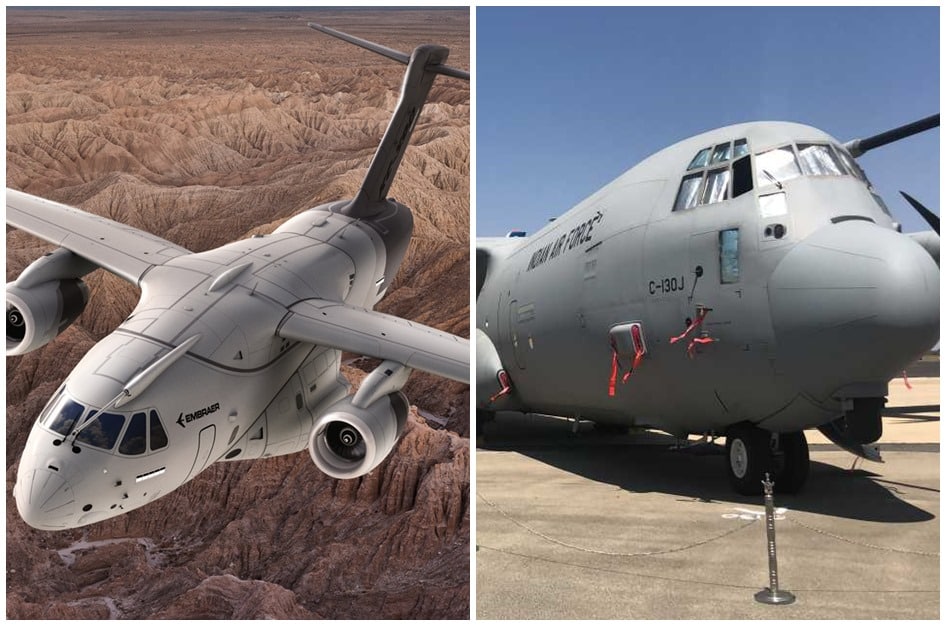Aerospace
HAL displays a strong desire to spearhead the IAF’s Medium Transport aircraft initiative

In a significant phase, Hindustan Aeronautics Limited (HAL), India’s top aerospace and defense corporation, has expressed strong interest in taking over the Indian Air Force’s (IAF) ambitious Medium Transport Aircraft programme.
By performing a key role in the Indian Air Force’s plans to buy 60–80 medium transport aircraft (MTA), Hindustan Aeronautics Limited (HAL) hopes to improve India’s air defense capabilities. Lockheed Martin (C-130J Hercules), Embraer (C-390 Millennium), and Airbus (A400M) have submitted notable offers, with the potential for local manufacturing through HAL’s tie-ups with defense companies.
By forming strategic alliances with the relevant defense businesses, HAL may be able to produce these aircraft locally in India. Such localized production arrangements will not only meet the needs of the IAF but also advance the “Make in India” drive and improve India’s domestic defense manufacturing capacity.
Following HAL’s exclusion from the C-295 aircraft agreement, the battle for the MTA contract became more intense. HAL’s desire to play a crucial part in the project has been revived by the IAF’s ambitions to place a sizable order for medium transport aircraft. The company has decided to do everything in its power to secure a position in this crucial undertaking.
The adaptability and capability of the Airbus A400M, Embraer C-390 Millennium, are all highly recognized. The selection procedure is vital for the IAF because each aircraft has unique features that can satisfy various mission requirements.
IAF to soon get 5th Gen advanced fighter jet AMCA, design revealed(Opens in a new browser tab)
The Airbus A400M is a versatile and advanced military transport aircraft that has significantly enhanced the capabilities of air forces across the globe. Developed by Airbus Defence and Space, this multi-role aircraft is designed to perform a wide range of missions, including tactical and strategic airlift, air-to-air refueling, and paratrooper operations. With its impressive payload capacity, the A400M can carry heavy equipment, troops, and humanitarian aid to remote and challenging locations.
Embraer C-390 Millennium is a cutting-edge military transport aircraft that stands as a testament to Brazilian aviation prowess. Developed by Embraer Defense and Security, the C-390 Millennium combines high-performance features with a versatile design, making it a true workhorse for a variety of missions. Equipped with powerful jet engines and advanced avionics, the aircraft boasts exceptional speed, range, and maneuverability, enabling it to operate effectively in both tactical and strategic airlift operations.
HAL’s interactions with well-known companies like Embraer and Airbus are clear evidence of its commitment to investigating joint ventures and the potential for setting up production facilities in the nation. As India looks forward to bolstering its defense capabilities, the MTA procurement program represents a crucial milestone. The involvement of HAL and the potential collaboration with global aerospace giants open up new horizons for the Indian defense sector.

Aerospace
Boeing Transfers Rocket Stage to NASA, Paving Way for Human Moon Mission

Boeing has achieved a significant milestone by providing NASA with the second core stage of the Space Launch System (SLS) rocket.
This crucial component, crafted at NASA’s Michoud Assembly Facility (MAF), is set to propel the Artemis II crew into lunar orbit, marking humanity’s return to deep space after a 50-year hiatus.
The monumental Boeing-built rocket stage, the largest element of the Artemis II mission, will embark on a journey aboard the Pegasus barge, traveling 900 miles to NASA’s Kennedy Space Center.
Comparison of two legendary aircraft B777x vs B747 aircraft:Click here
Upon arrival, it will be meticulously integrated with other essential Artemis II components, including the upper stage, solid rocket boosters, and NASA’s Orion spacecraft within the iconic Vehicle Assembly Building. This intricate integration process is a vital step toward the eagerly anticipated Artemis II launch, slated for 2025.
“Boeing-built products helped land humankind on the moon in 1969, and we’re proud to continue that legacy through the Artemis generation,” remarked Dave Dutcher, vice president and program manager for Boeing’s SLS program. “Together, with NASA and our industry partners and suppliers, we are building the world’s most capable rocket and paving the way to deep space through America’s rocket factory in New Orleans.”
NASA, Lockheed Martin Reveal X-59 Quiet Supersonic Aircraft:Click here
The delivery of Core Stage 2 marks a significant achievement in the evolution of the SLS rocket. Towering over 200 feet and powered by four RS-25 engines, this core stage, coupled with two solid-fueled booster rockets, will generate a staggering 8.8 million pounds of thrust. This immense power is crucial to launching Artemis II and future missions into the vast expanse of space.
The SLS rocket stands unparalleled in its capability to transport both crew and substantial cargo to the moon and beyond in a single launch. Its extraordinary capacity will facilitate the delivery of human-rated spacecraft, habitats, and scientific missions to destinations including the moon and Mars, ushering in a new era of space exploration.
-

 Travel1 week ago
Travel1 week agoAir India to Expand US Operations with Three New Routes After a Decade
-

 Travel2 weeks ago
Travel2 weeks agoWhy We Should Avoid These Stamps in a Passport
-

 Airlines1 month ago
Airlines1 month agoInvestigations Reveal Fake Chinese Titanium in Boeing and Airbus Jets
-

 Tech4 weeks ago
Tech4 weeks agoChina’s CATL Plans 1,800-Mile Electric Plane Launch by 2027
-

 Airport3 days ago
Airport3 days agoTop 10 Largest Airports in the World by Size
-

 Aerospace4 weeks ago
Aerospace4 weeks agoChina’s Fighter Jets Turn Wings into Autonomous Drones
-

 Airlines4 days ago
Airlines4 days agoAir India Rolls Out A350s for Delhi-New York JFK and Newark Routes
-

 Defence3 weeks ago
Defence3 weeks agoBoeing Enhances Chinook with New Engines and Block II Upgrades at $96 Million







